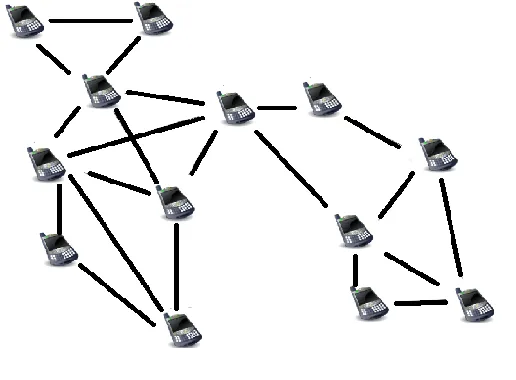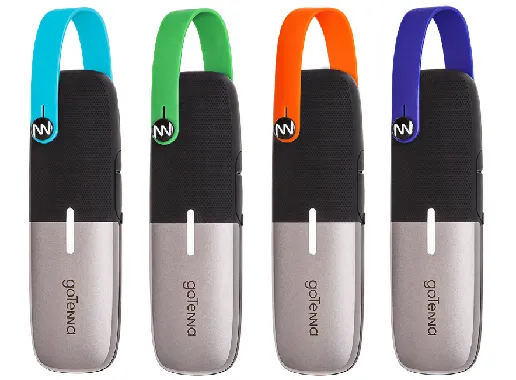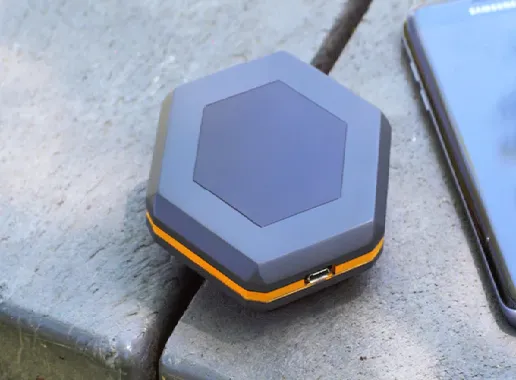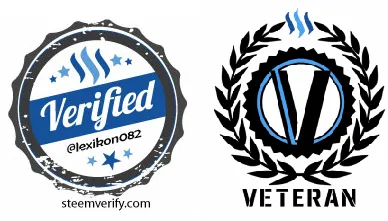I first became interested in decentralized cellular technology during protests in Hong Kong in 2014. Freedom of Speech is restricted in China and protestors were using an app called Fire Chat to communicate and organize to keep their identities anonymous from the Chinese Government.
Firechat uses a technology called mesh networking
Mesh networking is the ability to chain devices together.

Firechat uses Bluetooth to allow users to communicate by text without the need of cellular networks or Wi-Fi. The range is approximately 250 feet from device to device. The network has the ability to bounce signals off of other phones with the app installed to reach users that are farther than 250 feet away.
Three downfalls of Firechat.
- All messages are public
- Text only
- Range
Two devices that take mesh networking to the next level
goTenna Mesh
The goTenna Mesh is currently on the market. The device must be paired with your phone via BlueTooth and a downloadable app. The device uses a 1-watt Ultra High Frequency(UHF) radio to broadcast messages to other users.
Like Firechat, it has the ability to relay text messages. There is a topographical map feature you can subscribe to, giving users the ability to access offline maps.

The goTenna Mesh range is approximately 3 miles in open areas and 1 mile in urban areas for straight line communication. However, the device itself acts as a node allowing other users to bounce their signal off other devices so a message can reach its intended recipient.
According to the GoTenna website, the current record for successful communication using the node feature is 10 miles.
Messages are encrypted and can be kept private. Users also have the option to enable private group chats.
Sonnet
The Sonnet device is currently on KickStarter. The device has the same abilities as the GoTenna Mesh, but with three big differences.
It allows the user to send image files and voice recordings.
Additionally, the app eliminates the need for internet access because the application to install to your smartphone is preloaded on the Sonnet device itself.

Sonnet claims line of sight communication for the device to be 6.2 miles. I have been trying to figure out how this is accomplished compared to the range of the goTenna Mesh because both devices are 1-watt in power and auto tune to UHF, depending on your location, to transmit data.
Conclusion
Decentralized cell service still needs major advancements to become a viable solution to cell phone providers(i.e. real time voice communication). In my opinion, frequency and power output licensing restrictions by governments for the average user limit the capability of these products to carry data further. This is an example of how government interference limits innovation.
Bonus
Interesting Notes via Sonnet comments section
We have designed another prototype that exposes a SMA connector so users can connect directional antennas to increase the range of the Sonnet. We are currently doing tests to assess if the SMA connector will create any problem with water-resistance of the enclosure. If not the SMA connection will make it to the final version of the product.


OFFICIAL HOME OF THE FIRST EVER LOONEY COIN

If you enjoyed this post, please upvote and follow if you desire! I mostly story post about my sobriety, family, effects of war, and the crazier parts of my life. However, if it interests me I may just Steem about it! Steem on Steemians!
